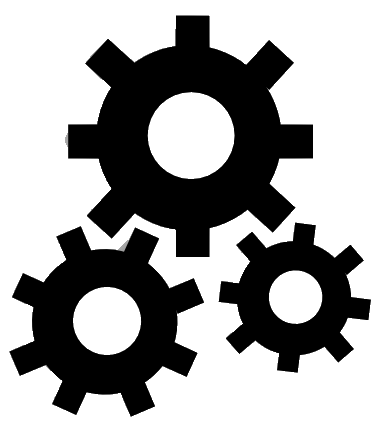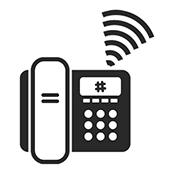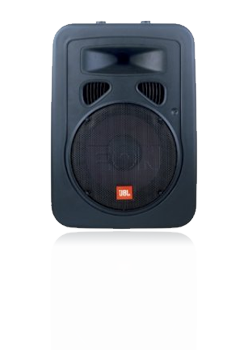
 Products & Services
Products & Services
 Biomatric System
Biomatric System
OverView :
 Biometrics is the science and technology of measuring and analyzing biological data. In information technology, biometrics refers to technologies that measure and analyze human body characteristics, such as DNA, fingerprints, eye retinas and irises, voice patterns, facial patterns and hand measurements, for authentication purposes.
Biometrics is the science and technology of measuring and analyzing biological data. In information technology, biometrics refers to technologies that measure and analyze human body characteristics, such as DNA, fingerprints, eye retinas and irises, voice patterns, facial patterns and hand measurements, for authentication purposes.
 Authentication by biometric verification is becoming increasingly common in corporate and public security systems, consumer electronics and point of sale (POS) applications. In addition to security, the driving force behind biometric verification has been convenience.
Authentication by biometric verification is becoming increasingly common in corporate and public security systems, consumer electronics and point of sale (POS) applications. In addition to security, the driving force behind biometric verification has been convenience.
 Biometric devices, such as fingerprint scanners, consist of:
Biometric devices, such as fingerprint scanners, consist of:
 A reader or scanning device
A reader or scanning device
 Software that converts the scanned information into digital form and compares match points
Software that converts the scanned information into digital form and compares match points
 A database that stores the biometric data for comparison
A database that stores the biometric data for comparison
 To prevent identity theft, biometric data is usually encrypted when it's gathered. Here's how biometric verification works on the back end: To convert the biometric input, a software application is used to identify specific points of data as match points. The match points in the database are processed using an algorithm that translates that information into a numeric value. The database value is compared with the biometric input the end user has entered into the scanner and authentication is either approved or denied.
To prevent identity theft, biometric data is usually encrypted when it's gathered. Here's how biometric verification works on the back end: To convert the biometric input, a software application is used to identify specific points of data as match points. The match points in the database are processed using an algorithm that translates that information into a numeric value. The database value is compared with the biometric input the end user has entered into the scanner and authentication is either approved or denied.
 Among all the biometric techniques, fingerprint-based identification is the oldest method which has been successfully used in numerous applications. Everyone is known to have unique, immutable fingerprints. A fingerprint is made of a series of ridges and furrows on the surface of the finger. The uniqueness of a fingerprint can be determined by the pattern of ridges and furrows as well as the minutiae points. Minutiae points are local ridge characteristics that occur at either a ridge bifurcation or a ridge ending.
Among all the biometric techniques, fingerprint-based identification is the oldest method which has been successfully used in numerous applications. Everyone is known to have unique, immutable fingerprints. A fingerprint is made of a series of ridges and furrows on the surface of the finger. The uniqueness of a fingerprint can be determined by the pattern of ridges and furrows as well as the minutiae points. Minutiae points are local ridge characteristics that occur at either a ridge bifurcation or a ridge ending.
 Fingerprint scanning is the acquisition and recognition of a person’s fingerprint characteristics for identification purposes. This allows the recognition of a person through quantifiable physiological characteristics that verify the identity of an individual.
Fingerprint scanning is the acquisition and recognition of a person’s fingerprint characteristics for identification purposes. This allows the recognition of a person through quantifiable physiological characteristics that verify the identity of an individual.
 There are basically two different types of finger-scanning technology that make this possible. One is an optical method, which starts with a visual image of a finger. The other uses a semiconductor-generated electric field to image a finger. There is a range of ways to identify fingerprints. They include traditional police methods of matching minutiae, straight pattern matching, moiré fringe patterns and ultrasonic.
There are basically two different types of finger-scanning technology that make this possible. One is an optical method, which starts with a visual image of a finger. The other uses a semiconductor-generated electric field to image a finger. There is a range of ways to identify fingerprints. They include traditional police methods of matching minutiae, straight pattern matching, moiré fringe patterns and ultrasonic.
Salient Features :
 Shortcut ID matching opportunity provided
Shortcut ID matching opportunity provided
 Various Authentication Media :Supports different security combination: fingerprint, password & RF cards (option: HID/Mifare/EM)
Various Authentication Media :Supports different security combination: fingerprint, password & RF cards (option: HID/Mifare/EM)
 LFD (Live Finger Detection) & Auto-on Function : Recognize fake fingerprint & Auto fingerprint capture process
LFD (Live Finger Detection) & Auto-on Function : Recognize fake fingerprint & Auto fingerprint capture process
 LED shows Power & network connection.
LED shows Power & network connection.
 Beep sound with fingerprint enroll & authentication success/failure.
Beep sound with fingerprint enroll & authentication success/failure.
 Touch Keypad with glittering Backlight
Touch Keypad with glittering Backlight
 Function Key (Time Attendance mode)
Function Key (Time Attendance mode)
 Various function available using F1~F4 keys (combination)
Various function available using F1~F4 keys (combination)
 Various Authentication Method: 1:1, 1:N authentication, shortcut ID available for user convenience.
Various Authentication Method: 1:1, 1:N authentication, shortcut ID available for user convenience.
Benefits
 Simplify many aspects of your business:The Fingerprint scanner can replace long lists of passwords that can often change or be lost and stolen. Biometric time clock to simplify the process of keeping track of employee attendance. No more manually adding hours or making sure employees are honestly using their ID badges (and not having other employees punch in and out for them. Simply record the individuals fingerprint pattern once and they are set for life. Should you need to remove the employees access rights, you can simply delete the user by using a biometric software program.
Simplify many aspects of your business:The Fingerprint scanner can replace long lists of passwords that can often change or be lost and stolen. Biometric time clock to simplify the process of keeping track of employee attendance. No more manually adding hours or making sure employees are honestly using their ID badges (and not having other employees punch in and out for them. Simply record the individuals fingerprint pattern once and they are set for life. Should you need to remove the employees access rights, you can simply delete the user by using a biometric software program.
 Reduce Costs : Biometric fingerprint scanner can help reduce your business costs in numerous ways. They can reduce support costs in maintaining these lists of lost passwords by reducing calls to your help desk. They can replace ID badges and magnetic security badges that are costly to replace. They can closely monitor employee attendance by keeping more accurate and honest records of employee attendance.
Reduce Costs : Biometric fingerprint scanner can help reduce your business costs in numerous ways. They can reduce support costs in maintaining these lists of lost passwords by reducing calls to your help desk. They can replace ID badges and magnetic security badges that are costly to replace. They can closely monitor employee attendance by keeping more accurate and honest records of employee attendance.
 Increase Security : Biometric Fingerprint Scanner units can offer enhanced security by restricting access to computers, work areas, as well as files that need additional security beyond a typical password which can be lost or shared with unauthorized users Fingerprint scanner also keep a record of who has last accessed an area or a specific file so that a virtual paper trail is always accessible to know who is truly accessing your system and secure areas. Many different types of fingerprint scanner exist to help your business's security efforts. Newer types of hardware are being developed that include a biometric component. But, simple devices are available that will allow you to implement biometric technology through a simple USB port.
Increase Security : Biometric Fingerprint Scanner units can offer enhanced security by restricting access to computers, work areas, as well as files that need additional security beyond a typical password which can be lost or shared with unauthorized users Fingerprint scanner also keep a record of who has last accessed an area or a specific file so that a virtual paper trail is always accessible to know who is truly accessing your system and secure areas. Many different types of fingerprint scanner exist to help your business's security efforts. Newer types of hardware are being developed that include a biometric component. But, simple devices are available that will allow you to implement biometric technology through a simple USB port.
 Without a doubt there has been a steady increase in the rise of fingerprint security products like the fingerprint scanner in more businesses every day.
Without a doubt there has been a steady increase in the rise of fingerprint security products like the fingerprint scanner in more businesses every day.
Market Use
 Biometric scanners are a cost-effective step many businesses can take to help authenticate the actions of their employees as well as increase their own businesses security. Fingerprint Scanner serve a variety of functions, but are most commonly seen in time clock applications, on walls where they serve as Access Control units to allow or restrict access to highly secured areas, as well as attached to workstations to make sure that the correct fingerprint scan has been inputted before allowing an employee or individual access to a specific computer, workstation, or document.
Biometric scanners are a cost-effective step many businesses can take to help authenticate the actions of their employees as well as increase their own businesses security. Fingerprint Scanner serve a variety of functions, but are most commonly seen in time clock applications, on walls where they serve as Access Control units to allow or restrict access to highly secured areas, as well as attached to workstations to make sure that the correct fingerprint scan has been inputted before allowing an employee or individual access to a specific computer, workstation, or document.
 Turnstiles (full or half height) are used to control the entry or exit of people.
Turnstiles (full or half height) are used to control the entry or exit of people.
 CCTV Surveillance System
CCTV Surveillance System Access Control System
Access Control System Attendance System
Attendance System Biometric Readers
Biometric Readers Visitor Management System
Visitor Management System Automation System
Automation System Video Intercom System
Video Intercom System
 Intrusion Alarm System
Intrusion Alarm System
 PA System
PA System
 Turnstile
Turnstile